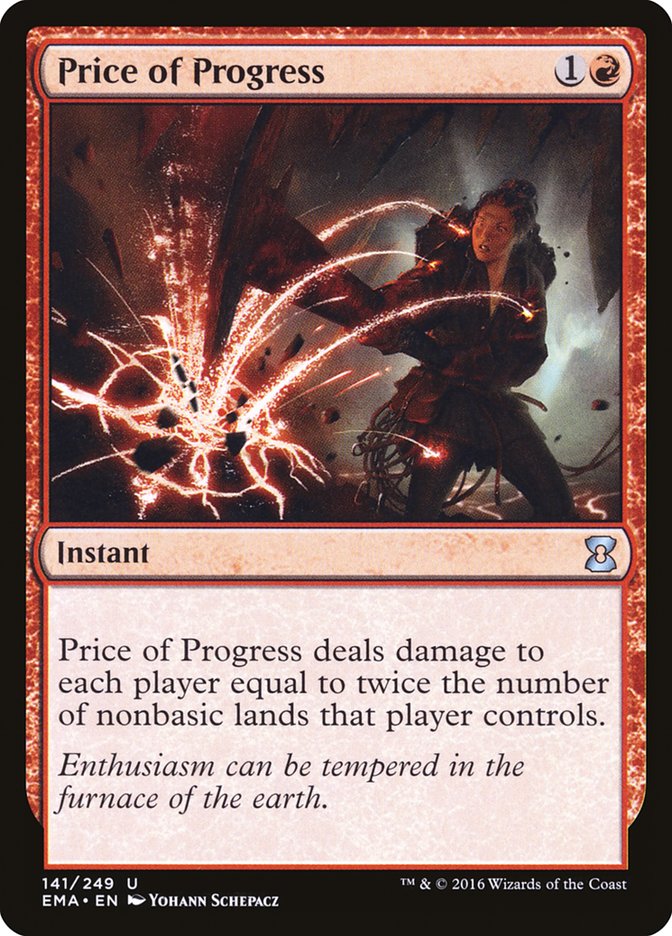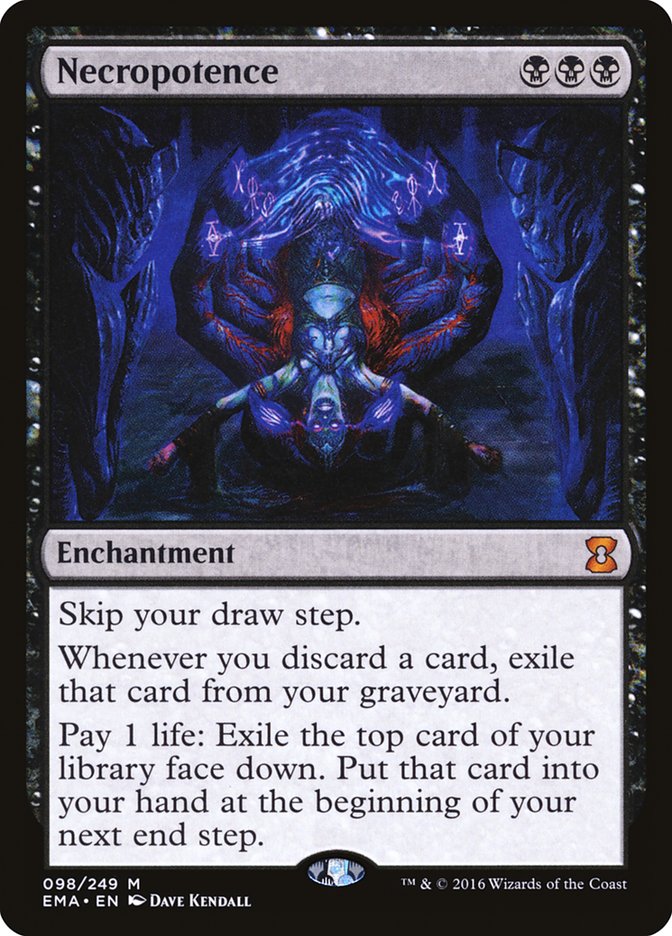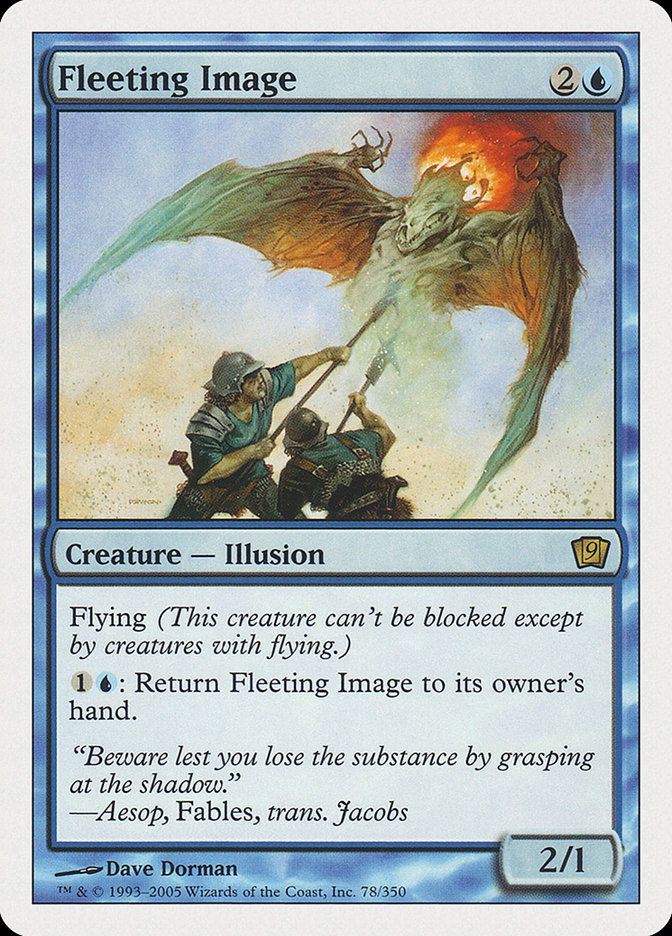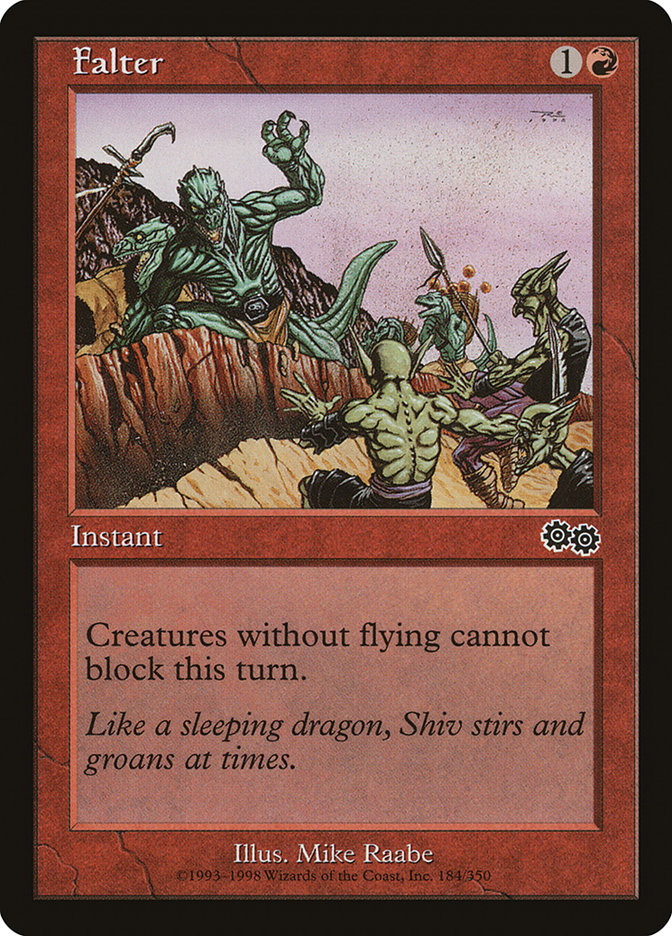Last month, Emrakul, the Promised End; Smuggler’s Copter; and Reflector Mage were added to the Standard banned list. This banning is unprecedented, insofar as never before in the flagship Constructed format have cards with so tolerable a presence been suddenly excluded.
In the past ten years, there’s only been one other instance of Standard banning – Jace, the Mind Sculptor, and Stoneforge Mystic in 2011 – cards which were flagrantly overpowered (both are Vintage and Legacy staples), virtually ubiquitous, and at home in a singular dominating deck. The current banning is different – it represents the beginning of a new, more aggressive approach to format maintenance.
This is reflected in the announcement, made simultaneously, that there will now be twice as many scheduled opportunities for banning cards. Sam Stoddard has already said that, had these opportunities existed previously, another banning would have occurred as recently as the last format, with Collected Company.
Generally speaking, this proactive approach has been received positively, as bold and smart. Owen Turtenwald recently gave a good breakdown of how each card reduced available play patterns, representative of the solid reasoning behind the decision. The result of the bans was the obliteration of the existing format, resetting possibilities for exploration.
Going Deeper
As well-received as it was, the sudden implementation of this new approach warrants a review of the old one and the reasons behind it. The original limit to Standard bannings was given by Aaron Forsythe:
“We like to avoid having to solve problems by banning cards, as that leads to a culture of fear. We certainly don’t want people to start believing that all the good cards they own are in the crosshairs of the DCI.”
But this was back in 2005. Since then, all things have had to adapt to an increasingly digital world. Magic has to adjust, on one hand, to the increased dissemination of tournament results and capacity for data-mining, and on the other to slick digital-native competitors, like Hearthstone, that are able to tweak unbalanced cards far more seamlessly after release. It’s no surprise, then, that adjustments are being made, but the full calculation and strategy behind them still hasn’t been made clear. To get a better idea of what’s going on, let’s look at some of the reasons against an aggressive approach to Standard banning.
1. Aggressive Banning Increases Barrier to Entry and Damages Consumer Confidence.
This is basically Aaron Forsythe’s original concern above. The sudden banning of cards has the effect of imposing an unexpected tax on the segments of the player base who’ve invested in those cards. Smuggler’s Copter and Emrakul, for example, dropped to about 50% of their original physical value and about 10% of the original digital value, translating into a $20-80 hit per playset overnight. The monetary sting isn’t to mention the downer of cracking a pack of a current set, opening a striking card, and finding out it’s been disallowed for mainstay competition.
Competitive Magic can already trend toward expensive, straining at the limits of accessibility. 2014’s plans to increase the rotation schedule had to be rolled back because players felt it was “difficult to keep up” and because it was presenting “a barrier to new or casual players”. With Grand Prix entry fees now above $100 as the norm, Paul Rietzl recently expressed concern that GPs can’t continue to function as a gateway to tournament Magic with such a high financial barrier to entry; at a certain point, broke kids and responsible parents decide other hobbies – like inexpensive video games – make more sense. The liberal approach to banning puts additional stress on this existing issue.
The tax also works as a deterrent more broadly. With a precedent for aggressive banning and twice as many opportunities for doing it, there will be stretches of weeks where players will wisely hesitate to invest money or time into Standard. After enough rounds of this, players are likely to view keeping up with Standard at all to be not worth the trouble.
The counterargument is that aggressively pruning the metagame keeps the economy stable insofar as it keeps players engaged, and that the money lost in Copters and Emrakuls flows into cards revitalized by their banning. In any case, the approach increases volatility. Wizards benefits from the artificially induced greater relevance of Aether Revolt cards, pros benefit from the destruction of the established best decks, and for the dealers, maybe it’s a wash; but it’s the casual competitive player, who acquired the right cards at the wrong time, who pays for it. And, again, this is not a one-time measure, but a potentially regular occurrence.
2. Aggressive Banning Hedges Out Satisfying Aspects of Problem-Solving.
I interviewed Richard Garfield a little while ago and asked him if he followed competitive Magic, and if so, which eras or moments stood out in his memory. He answered:
Richard Garfield: My favorite moments are from very old days, like the “Necro Summer.” There were many calls to ban it but we decided to weather it out. It actually made for a really interesting environment. Even though there were mostly Necropotence decks, they were also many different flavors, and also a few surprise counters that came up.
Jeff Cunningham: … Like Turbo Stasis and ErnhamGeddon at US National in 1996.
RG: Right. And it taught me a bunch of things. For instance, that having a huge number of different archetypes at the top does not necessarily make the best environment, because there is something to be said… if you can predict what people are playing it gets very interesting gameplay in that area also. And it also reinforced my philosophy which has always held which comes out again and again which is that you give people the chance to deal with a problem rather than give them a chance to solve it as a game designer.
This same facet of problem-solving comes up all the time in established or late Constructed formats. At Pro Tour Magic 2015, conventional wisdom had it that the format had stagnated into an intractable rock-paper-scissors between Blue Devotion, Black Devotion, and U/W Control. The format is still remembered this way, as particularly obvious and defined by overpowered cards like Pack Rat and Sphinx’s Revelation. In fact, however, the Pro Tour was statistically dominated by decks that solved the metagame, namely Jund Planeswalkers and G/W/(X) Aggro decks tuned to handle a perceived horrible matchup in Blue Devotion. Had the format been left to develop for another month or two at high levels, it would’ve entered an entire second wind.
Even the most recent Standard format was thought to be solved in its second wave following the Pro Tour with G/B Devotion and U/W Tempo, before an innovative deckbuilder, Logan Nettles, brewed up R/G Aetherworks and sent it into another cycle.
Constructed Magic is a history of overpowered, warping, and “unfun” cards, generally considered to represent design oversights. These cards are naturally exploited and brought to the top of their respective formats. But Magic is fun not only when it meets a projected ideal of perfect diversity, parity, and interactivity, but when boundaries take form that both limit deckbuilding options and provide the unique conditions for breaking them to the fullest degree. Similarly, deckbuilding can be exciting not only when a format is brand-new – before entire categories of decks are pushed out by established powerhouses – but after this has already happened and solutions require subtle investigation into unusual spaces.
I thought Mike Flores put it well in last week’s Top Level Podcast:
Mike Flores: I didn’t find [Smuggler’s Copter] to be offensive. Like, if that was the best card in Standard, I’m all right with that. I’m all right with playing against Jitte too. You create paradigms, and can develop decks around the existence some of these things, and it’s rewarding to develop some of those things, and it’s rewarding to use “the weapons of the enemy” in a new and different way in order to blunt the incentives of others, and to realize new and different synergies. And I think the emergence of some of these Prized Amalgam decks, and some of these Scrapheap Scrounger Decks that weren’t traditionally on-color, I thought those were very interesting and largely enabled by Smuggler’s Copter.
Mike also gave an interesting example of a deck created at the end of the pre-bannings format that showcased what he means: a G/W Aetherworks deck using eight Wrath effects – an unusually high number for Constructed – since they match so well against Emrakul’s effect.
Now, Chapin’s reply in this exchange was also persuasive – that this kind of problem-solving is enjoyable especially for deeply enfranchised players and may be too difficult or technical for everyone. But the point here isn’t that this is the only kind of pleasure Magic offers or that it should go unchecked, but just that aggressive Standard banning can hedge out a particularly subtle, interesting, and rewarding kind of problem-solving.
3. Aggressive Banning Conditions Irritability and Short Attention Span.
Answering prayers with a godly banhammer has the consequence of diminishing the perceived agency of those on the ground. When a format takes shape, the dominant strategies begin to conspicuously exclude others possibilities. Deckbuilders have to respect the strategies that have emerged as dominant or lose. In other words, the deckbuilding challenge gets broken into two possibilities – either join the established decks, or beat them – with the latter requiring the skillful project of becoming acquainted with the format, sorting out its nuances, and exploiting them.
At this point in the format’s development, the opinion will start to gather that the format is stale and solved. Players then have two options: to attack the format as provided (i.e. “beat ’em or join ’em”), or assert the position that the puzzle really has become dull. The more Wizards shows themselves to be receptive to this opinion, the more appealing it becomes as a meta-option for players to beat the format, and the more the idea that Standard is unfun or on the verge of being unfun gets voiced.
Stoddard said that Collected Company would’ve been banned under the new system. But if the new system had already been in place over the past few years, the calls for banning against, for example, Rally the Ancestors; Jace, Vryn’s Prodigy; Dig Through Time; and Thoughtseize as resulting in unfun formats would’ve been much louder.
4. Aggressive Banning Is a Clumsy Solution.
Games create the perception of access to a substantive problem. Whether it’s baseball or Settlers of Catan, the rules of the game are meant to foster a dynamic and interesting problem to be worked out over and over again from different angles. A big part of the fun of playing and watching games comes from figuring out which approaches are superior to others in different ways. When we watch a Pro Tour, all of the opinions about the format set the stage, but we get to see them worked out over the Swiss. We watch several iterations of matchups play out between the best players and find out just why one archetype has the edge over another, given the peculiarities of the format.
The issue is that a policy of publicly adjusting the problem on the fly as it tends toward resolution strains this experience of insight and learning. The problem comes off as manufactured and arbitrary, its complexity and interest not emerging naturally from a carefully made design, but by retrospective adjustment, a tool that could be used to keep any game dynamic.
~
These are some of the considerations against an aggressive banning policy, especially in Standard. This isn’t necessarily to say the recent bans were a mistake, but to show some of the factors at play – factors overcome for the sake of more pressing concerns. With Wizards of the Coast’s announcement of a new digital push and the thrust of recent developments, it’s clear that they’re trying to figure out how best to tailor and monetize Magic for mobile platforms, with their distinct interface advantages and disadvantages.
The big question is how close Magic can and should be tailored to these digital mediums and payment structures so that its original appeal is retained and the game doesn’t just terminate in a clunkier version of Hearthstone. The drive toward digital adaptation is in tension with another possibility – coming to terms with Magic‘s partly analogue nature and the fundamental limits it presents, such as tangible cards that can’t be instantly remade and intricate mechanics that tend to play better over a table than on a tablet.
The new approach to Standard bannings is part of an overall plan to compete with digital-native games. The challenge is difficult, and the particular approach is riskier than it looks, destabilizing the game on several levels to allow it to do what games like Hearthstone can do more seamlessly by design. So it’s an open question. Most recently, six of the same deck just finished in the Top 6 of Pro Tour Aether Revolt. Now what?










